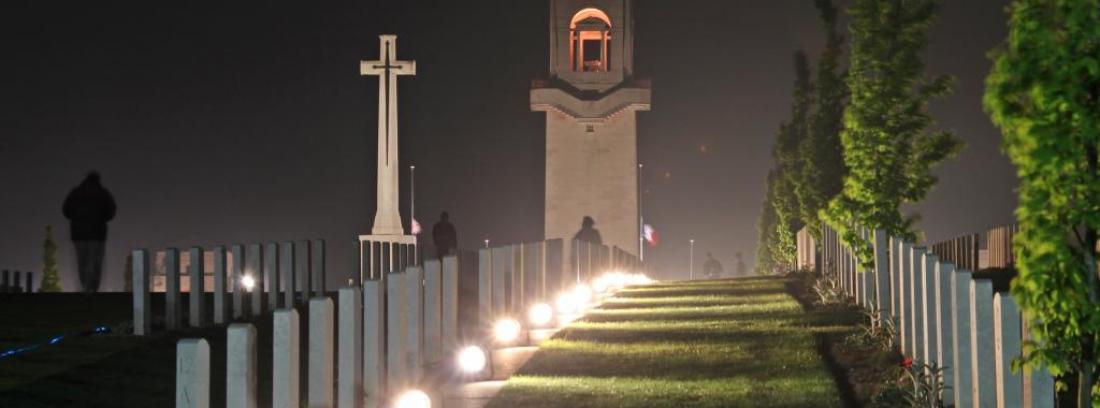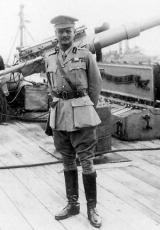L'Australie et la Nouvelle-Zélande dans la Grande Guerre

Corps 1
Australia and New Zealand/color][color=darkblue] in the Great War When war broke out in August 1914, Australia and New Zealand, like the entire British Empire, rallied to Great Britain's side. Today, the residents of many towns in the Somme and the North pass on memories of those soldiers, who came from the other end of the world to defend freedom.
Corps 2
Australian and New Zealand troops sailed for Europe in October 1914. When Turkey entered the war on the Central Powers' side the British decided to send them to Egypt. In agreement with Australia's and New Zealand's governments the British set up the Australian and New Zealand Army Corps under the orders of the English general Birdwood. The troops became famous under the acronym Anzac. In 1915, under the command of Ian Hamilton 50,000 men met in Alexandria, where Frenchmen-metropolitan soldiers, sailors and colonial troops-joined the British Corps and Anzac. On 25 April the Anzacs clashed with Turkish troops at Gallipoli in the Dardanelles. The fighting lasted until December and resulted in huge casualties. Since then 25 April has been commemorated as Anzac Day in Australia and New Zealand. After leaving the Dardanelles the Anzacs moved to the French front in early 1916. In March they formed two army corps: the 1st corps under General Birdwood's orders and the 2nd under those of General Godley. They fought in the hellish Battles of the Somme. In July 1916 the Australians participated in the Battle of Fromelles, sustaining heavy losses. In July and August Australian divisions attacked the Prussian Guard and Brandenburg regiments defending Pozières Mill, where fierce fighting dragged on for 45 days. The Australians took the position at the cost of 23,000 lives. On 15 September the New Zealand division, which held a sector around Armentières, attacked with support from the earliest tanks, which made a huge impression around the village Flers but the breakthrough could not be exploited. The Battle of the Somme lasted until late November. From 17 to 19 March 1917 Anzac, as part of the 5th British Army, reoccupied the land the Germans evacuated around Bapaume and found itself in contact with the fortified Hindenburg Line, which the Australians attacked in the Bullecourt sector on 11 April, capturing part of the front line. In early June Anzac fought in the Battle of Flanders, symbolised by the names Messines and Passchandaele. In the Ypres region the soldiers died of mustard gas poisoning in the mud; "yperite" eventually killed or maimed tens of thousands of them. That is when the Australians and New Zealanders were separated and the term Anzac ceased to be used. Both dominions took back their identities.
In mid-April 1918 the Australian troops fought bitterly to stop the German push towards Amiens, liberating Villers-Bretonneux on the 25th. They took Hamel in July and broke through the German lines with the Canadians in August before advancing to Roye and fighting in the Aisne in October and November. Meanwhile the New Zealanders were moving in on Quesnoy, which they took in November 1918. Elsewhere, from 1916 to 1918 Australians and New Zealanders fought on the Anglo-Turkish front in the ranks of the British army. Over 416,000 Australians fought in the Great War, including 313,000 on the Western front. So did 128,000 New Zealanders, of whom more than 90,000 fought in France and Belgium between 1914 and 1918. Some 60,000 Australians and New Zealanders died on all the fronts of the Great War. Many places of remembrance recall the Anzacs in those regions. For example, at the Australians' request a national memorial was raised at Villers-Bretonneux to the memory of their soldiers, the Diggers, who were killed in battle in France and Belgium.
In 1938 King George VI and French president Albert Lebrun inaugurated the memorial, where a ceremony takes place on 25 April every year. Caterpillar Valley cemetery near Longueval in the Somme is the final resting place of 125 New Zealand soldiers, and a monument to the memory of their comrades-in-arms missing in action bears the names of 1,205 men who fell in the 1916 Battles of the Somme. As a sign of gratitude to Australian soldiers, the French government had a Franco-Australian memorial erected in Canberra, inaugurated in 1961. Today, a policy of shared remembrance is being developed with several countries whose history
The Battle of Fromelles (19-20 July 1916)
On 1 July 2006 French minister of veterans affairs Hamlaoui Mekachera, his Australian counterpart, military officers and civilians met in Fromelles, in the North, at a ceremony to pay homage to the soldiers who had fought in the area 90 earlier. When the Allies unleashed the Somme offensive, the general staff decided to launch diversionary attacks on other parts of the front. British and Australian brigades led one of them at Fromelles around a fortified German position the English called Sugar Loaf. On the night of 15-16 July they launched a cloud of choking gas on Sugar Loaf, prompting the Germans to pound the Australian lines. On the 19th Allied artillery shelled the German lines with relative effectiveness. When the Allies rushed into a rain-soaked no-man's-land at 6pm they met with heavy fire. On the British front, a battalion reached the first German line but another was decimated, and two brigades were pinned down. The Australians received the responsibility of attacking Sugar Loaf head-on; some battalions were massacred before reaching the German lines while others captured the first enemy line with difficulty.
Shortly before midnight the Germans launched a series of counter-attacks. Under cover of darkness they slipped into the Allied lines, taking back various sectors, cutting off the Australians and threatening them with encirclement. The order to retreat went out to the last Allied fighters at around 5 o'clock in the morning. Casualties were heavy: the British lost over 1,400 officers and men and the Australians more than 5,500. German losses stood at over 1,200.


